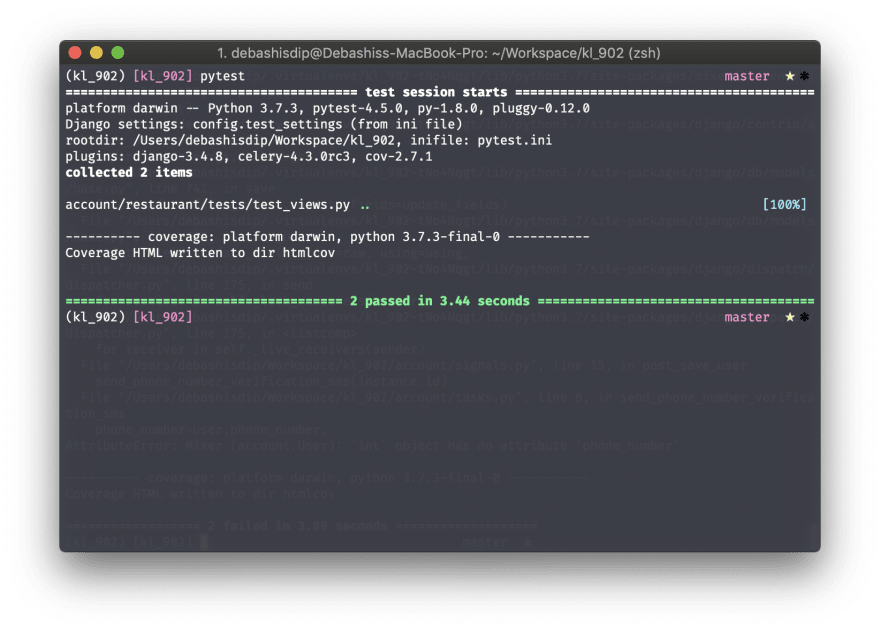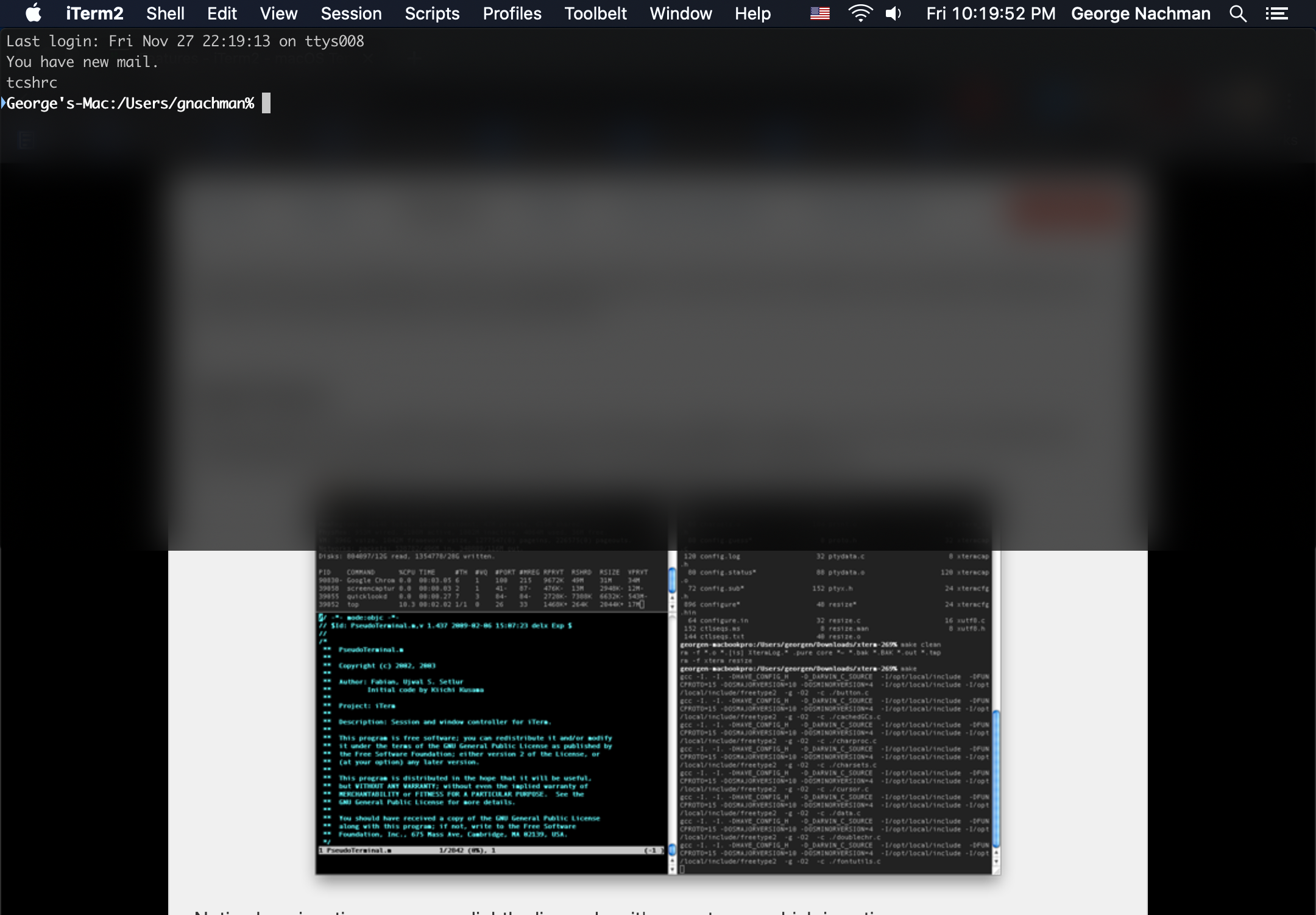

- #Iterm2 autocomplete how to
- #Iterm2 autocomplete code
- #Iterm2 autocomplete series
- #Iterm2 autocomplete free
- #Iterm2 autocomplete mac
What you might not know is that, during our installation of Oh-My-ZSH, all of the plugins that are listed in the official documentation were installed at *~/.oh-my-zsh/plugins. When we setup up our default plugins in the first part of this series, we simply added them to the array of plugins listed in the ~/.zshrc, like so: # Which plugins would you like to load? # Standard plugins can be found in $ZSH/plugins/ # Custom plugins may be added to $ZSH_CUSTOM/plugins/ # Example format: plugins=(rails git textmate ruby lighthouse) # Add wisely, as too many plugins slow down shell startup.īut how did they get installed from there? Now that we have set up our iTerm2 with Oh-My-ZSH, let's try to understand what it is we installed and we are the files to configure it. Now we want to dive deeper, go past the default plugins, and explain a little more about Oh-My-ZSH and how it works.
#Iterm2 autocomplete how to
In the first part of this series, we talked about how to install and set up your terminal to get you up and running quickly and with little effort, but with functionality and style.
#Iterm2 autocomplete series
I ran the script at the command line to download.*This post is the 2nd part of my series about iTerm2 and Oh-My-ZSH. I use this plugin to enable highlighting of commands whilst they are typed at the command line, helping me reviewing commands before I run them, particularly useful in catching syntax errors.

This plugin comes bundled as part of the oh-my-zsh install, so doesn’t need any installation or configuration, it adds git aliases and command completions. I use these plugins to help me be more productive on the command line, they provide command aliases, highlighting and enhanced command completions. The less sections are loaded the faster the shell will load, so I enable the sections that are of use to me. The SPACESHIP_PROMPT_ORDER array enables you to define which sections are enabled or disabled in the prompt, this is optional but can improve the performance of the prompt. Git # Git section (git_branch + git_status)īattery # Battery level and status jobs # Background jobs indicator SPACESHIP_PROMPT_ORDER =( dir # Current directory section I’ve configured JetBrains Mono as my default font to be used across all shells. Windows Terminal is a great open source terminal emulator from Microsoft enabling you to switch between different shells with ease and is fully customisable. I downloaded the font from the JetBrains website and installed it in Windows.

It has support for ligatures, which hugely helps with readability of code, reducing noise by merging symbols and balancing whitespace between characters more efficiently than regular fonts.
#Iterm2 autocomplete free
I like a good font that is easy to read, my current preference at the moment is JetBrains Mono, which is a free and open source typeface designed for developers, in fact it is the very font that you are reading right now.

I’m currently running Ubuntu 20.04 LTS which I installed from Microsoft Store after installing WSL on Windows 10. WSL comes into its own for SharePoint Framework (SFPx) development, which uses an open source technology stack, where developing in WSL2 Linux containers hugely improves the performance of installing and building solutions over using the Windows filesystem.
#Iterm2 autocomplete code
Well yes, but what the really nice thing about WSL2 is, how the WSL2 Linux containers can be interacted with from the Window OS, allowing you to do things like, launching Visual Studio code installed in Windows from within the Linux container or opening the Linux file system in File Explorer in Windows, making for seamless switching and really blurring the lines between the two operating systems. Windows Subsystem for Linux (WSL) 2 gives developers the ability to run Linux containers, benefiting from the improved filesystem performance, from within Windows.īut wait, doesn’t Docker already do that? This post documents my setup for open source and SharePoint Framework development, why I use certain components and the configuration steps I took.
#Iterm2 autocomplete mac
As a Mac user, I have benefitted from years of developer workflow improvements and enhancements at the command line but now I can bring those into Windows. Windows Subsystem for Linux (WSL) 2 has really changed the game when it comes to open source development on Windows. My WSL2 and Windows Terminal setup 20 December 2020


 0 kommentar(er)
0 kommentar(er)
